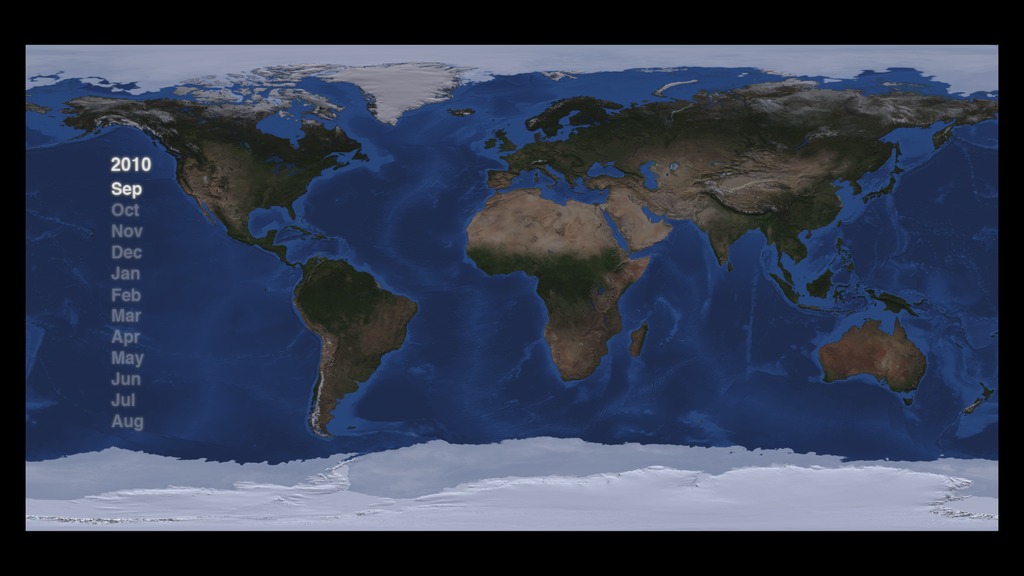Snow Leads, Sea Ice Follows
Seen from the vantage point of a satellite, snow covers much of North America for half the year like a white curtain that begins its descent in fall and isn't drawn up until spring. Lagging behind the snow by a month or so, sea ice spreads across the Arctic Ocean and infiltrates the channels, islands and bays of Alaska and Canada. Snow and sea ice share this leading-and-lagging relationship because of the different rates at which the ground and oceans absorb and emit heat. Land temperatures drop more quickly, and extensive snow cover settles in by October. The ocean has a longer memory of temperature. Arctic waters retain enough heat in fall to keep ice from forming well after snow has accumulated on solid ground at the same latitude. Likewise, Arctic sea ice doesn't reach its annual maximum extent until late March, typically more than a month after the snow cover peak. In the visualization below, keep an eye on the massive Hudson Bay in northern central Canada: Snow encircles the frigid body of water before the first sea ice creeps into the bay. In spring, snow retreats past the bay completely before its sea ice even begins to dissipate.

Snow and sea ice play follow-the-leader as winter descends and spring arrives.
Data from NASA's AMSR-E instrument captures the connected patterns of snow and sea ice cover in North America.
Snow and sea ice in the Northern and Southern Hemispheres pulse at exact opposite times of year, constantly out of phase.

Antarctic sea ice generally reaches its minimum extent in March around the time Arctic sea ice grows to its maximum extent.

NASA scientist Thorsten Markus measures the thickness and temperature of Antarctic sea ice.
Credits
Please give credit for this item to:
NASA's Goddard Space Flight Center
Photo courtesy of NASA/GSFC/Thorsten Markus
-
Animators
- Helen-Nicole Kostis (USRA)
- Cindy Starr (Global Science and Technology, Inc.)
-
Scientist
- Thorsten Markus (NASA/GSFC)
-
Writers
- Patrick Lynch (Wyle Information Systems)
- Adam P Voiland (Wyle Information Systems)
- Maria-Jose Vinas Garcia (Telophase)
Release date
This page was originally published on Thursday, December 29, 2011.
This page was last updated on Wednesday, May 3, 2023 at 1:53 PM EDT.
